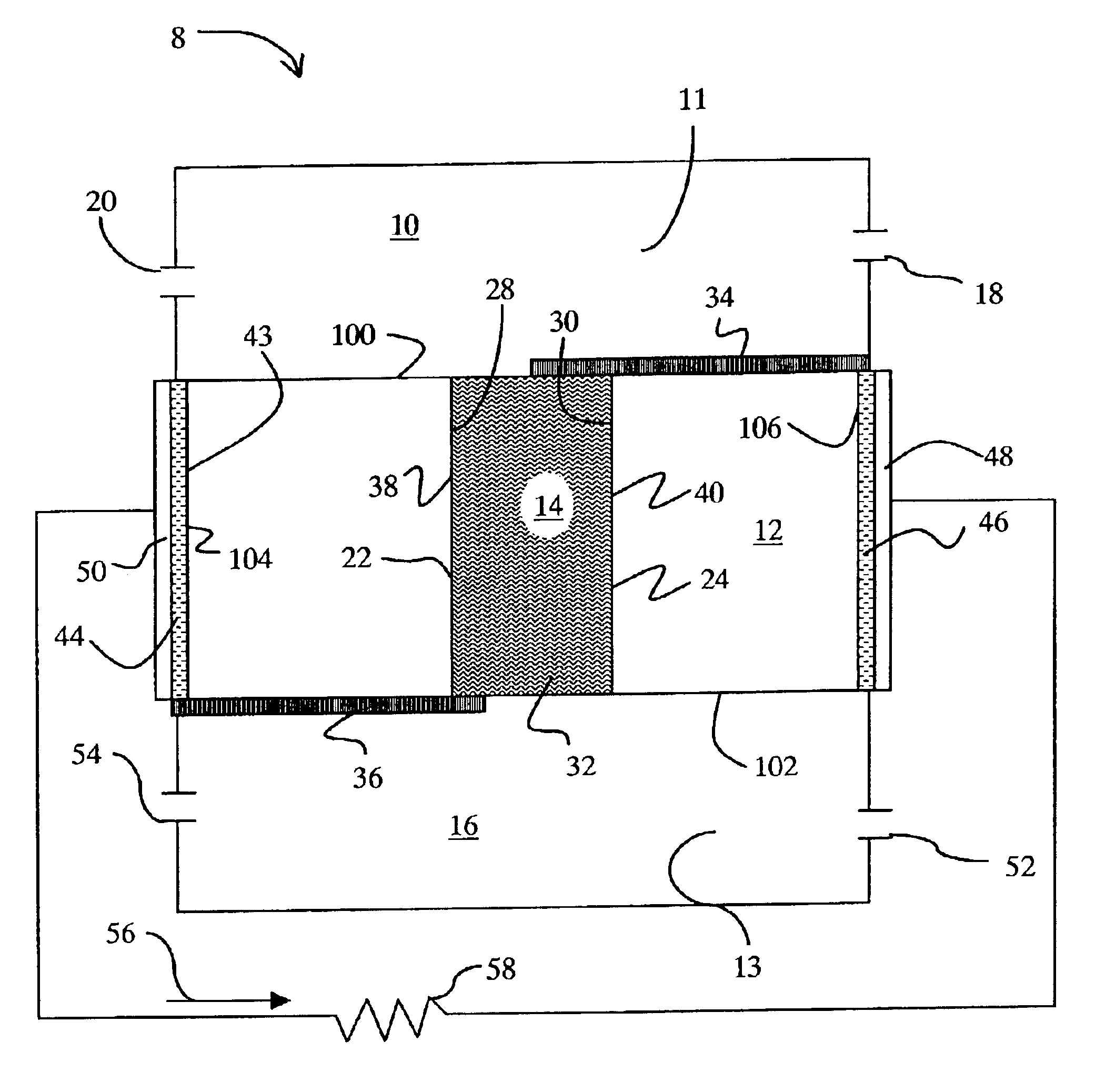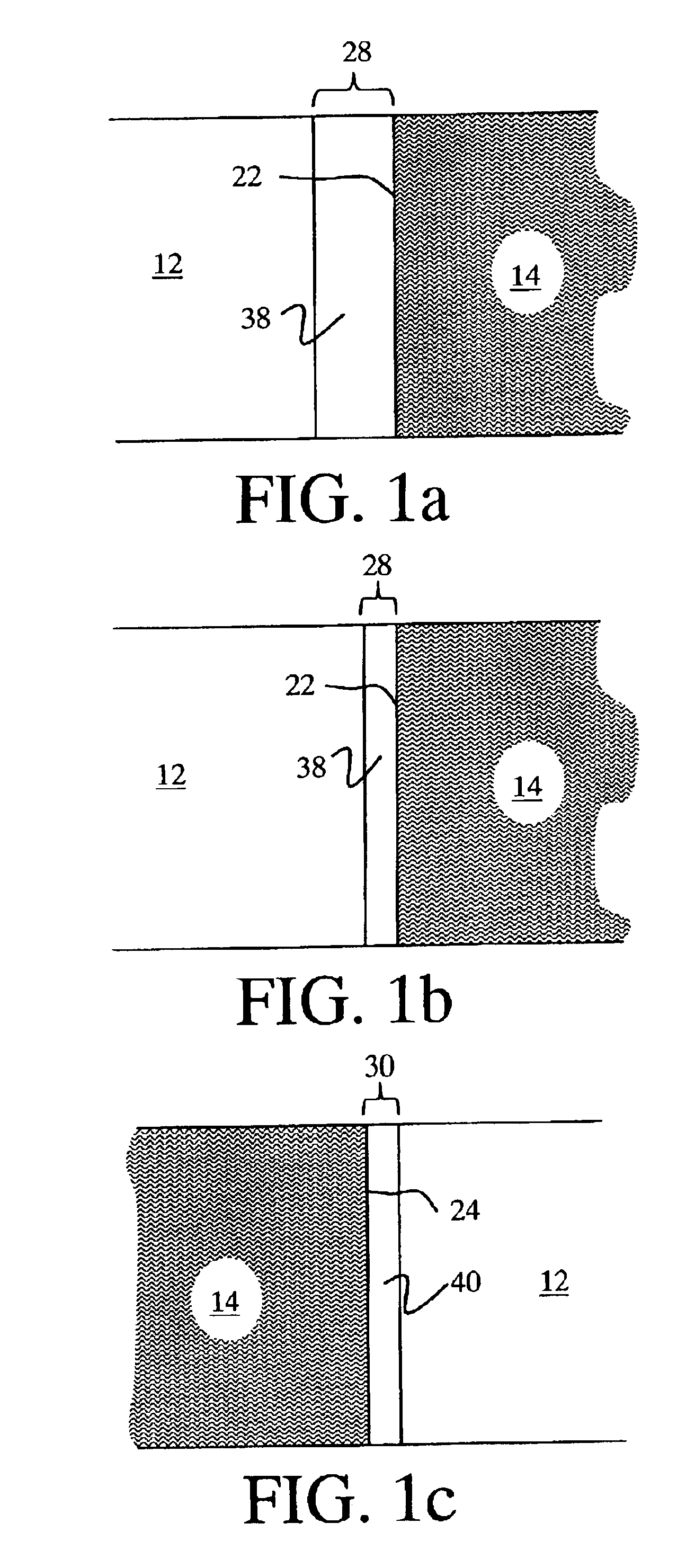Apparatus of high power density fuel cell layer with micro for connecting to an external load
a fuel cell and micro-chip technology, applied in the field of fuel cells, can solve the problems of increasing the internal resistance of the stack, reducing the overall efficiency of the fuel cell, and difficulty in manufacturing the layers of existing fuel cell configurations, so as to simplify the manufacturing process and simplify the design
- Summary
- Abstract
- Description
- Claims
- Application Information
AI Technical Summary
Benefits of technology
Problems solved by technology
Method used
Image
Examples
Embodiment Construction
The present invention relates to a microstructure fuel cell having a substrate, which is preferably porous, an assembly of fuel cells having a single or multiple substrate structure and methods for manufacturing such fuel cells and fuel cell layers.
The invention relates to a specific fuel cell architecture that is of an integrated design in which the functions of gas diffusion layers, catalyst layers, and electrolyte layers are integrated into a single substrate. This architecture makes it possible to fold together the various ‘layers’ of which a working fuel cell is formed and produce linear, curvilinear, undulating or even fractal shaped electrolyte paths that allow for higher volumetric power density to be achieved by increasing the electrochemically active surface area. In addition, by forming the various fuel cell layers within a single substrate the problem of simple contacting of fuel cell components to create electrical connections is eliminated, thus creating the potential ...
PUM
| Property | Measurement | Unit |
|---|---|---|
| width | aaaaa | aaaaa |
| height | aaaaa | aaaaa |
| height | aaaaa | aaaaa |
Abstract
Description
Claims
Application Information
 Login to View More
Login to View More - R&D
- Intellectual Property
- Life Sciences
- Materials
- Tech Scout
- Unparalleled Data Quality
- Higher Quality Content
- 60% Fewer Hallucinations
Browse by: Latest US Patents, China's latest patents, Technical Efficacy Thesaurus, Application Domain, Technology Topic, Popular Technical Reports.
© 2025 PatSnap. All rights reserved.Legal|Privacy policy|Modern Slavery Act Transparency Statement|Sitemap|About US| Contact US: help@patsnap.com



